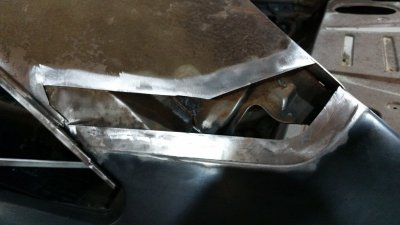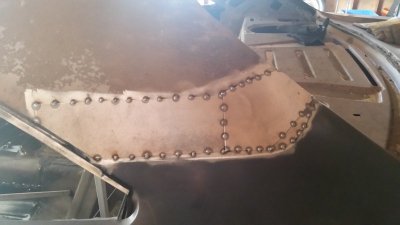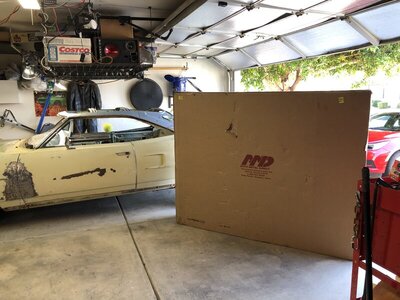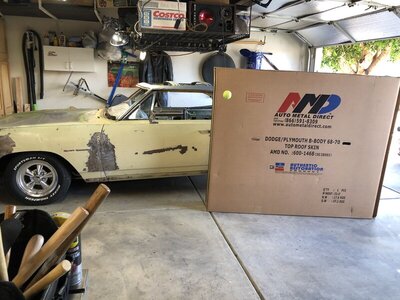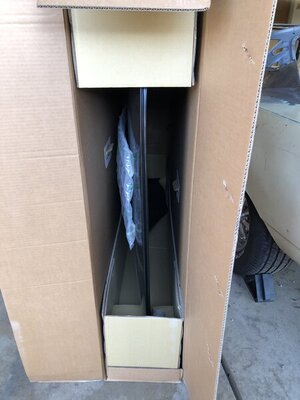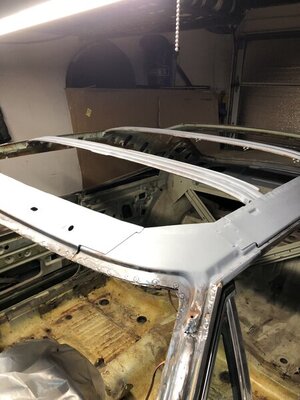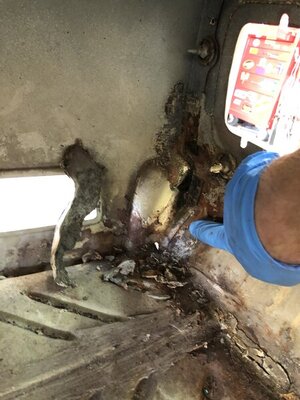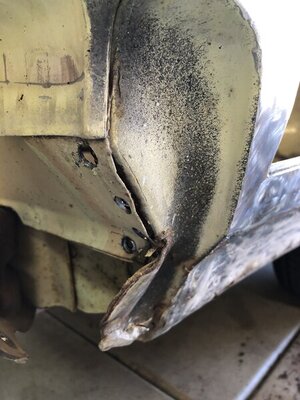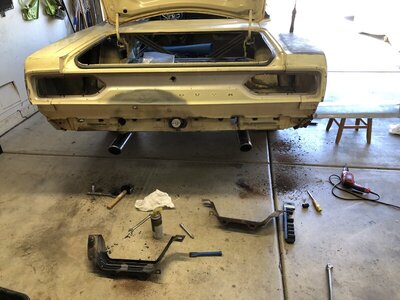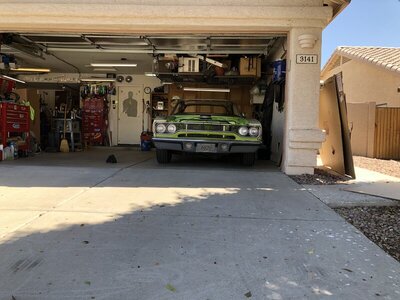A couple of tips for those working on these big b bodies. I didn't have a rotisserie, so I grabbed six adjustable jacks, and used a 6' level to get the car level side to side. from front to back I just measured from the center of wheel to floor. The reason I used 6 jacks is to support the car as much as possible. With these unibody cars, you have to support as much as possible before cutting major panels, and especially floor/trunk. I've heard stories of guys who cut the floor out while the car sat on half flat tires on uneven ground. Welded the new floor in and couldn't shut the doors. They would never line up. There are a lot of things I would do differently if I could go back. It's all part of learning.

